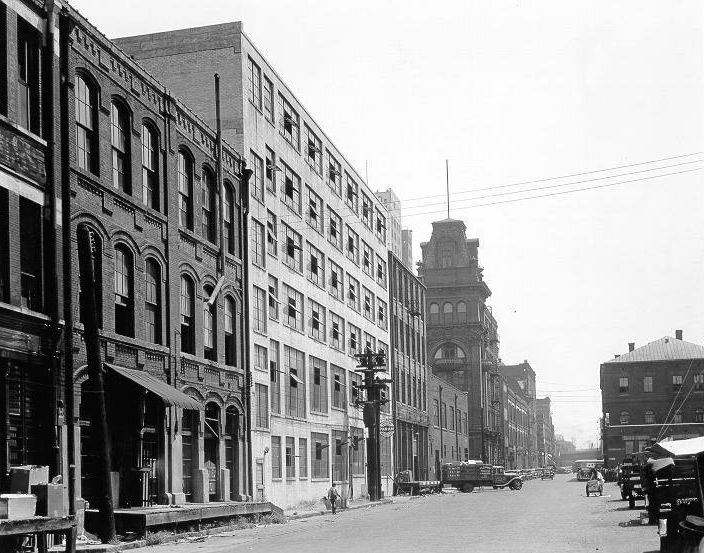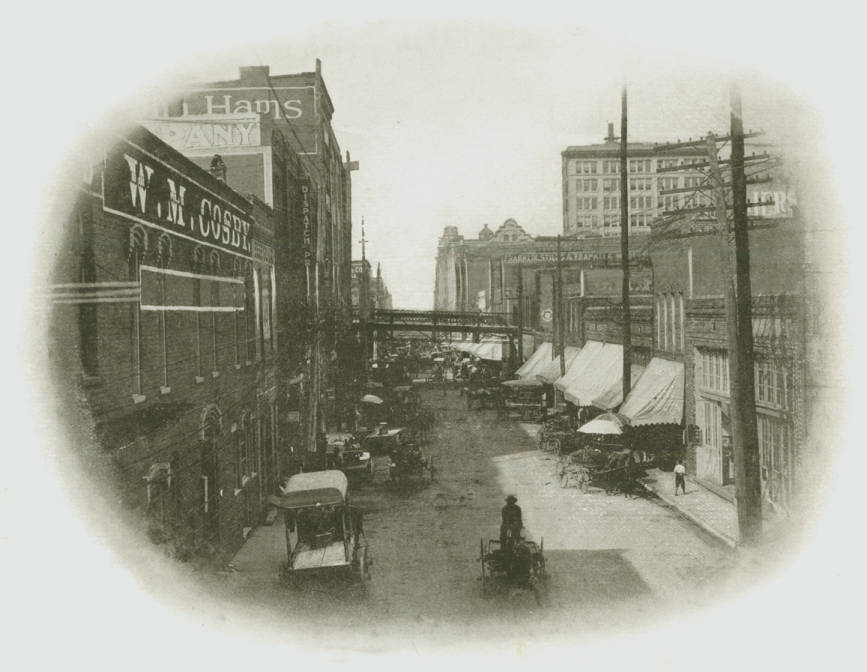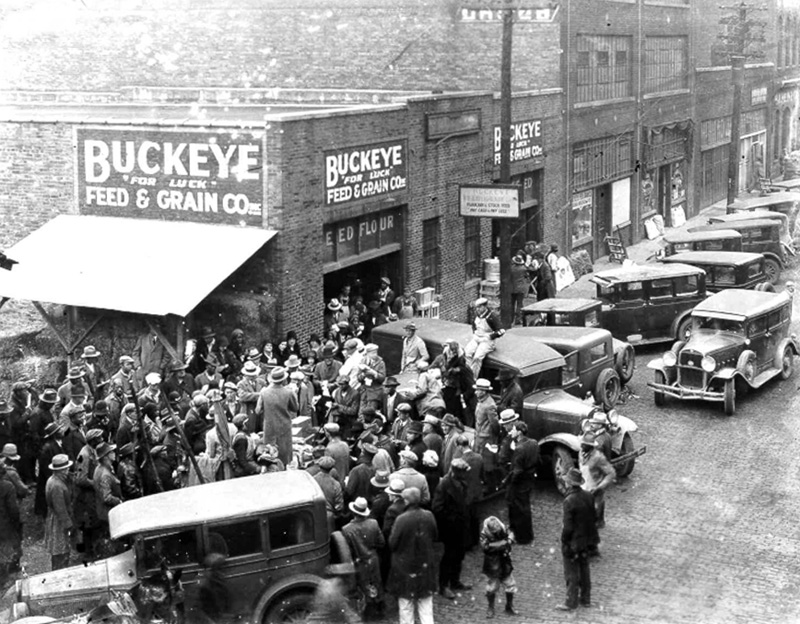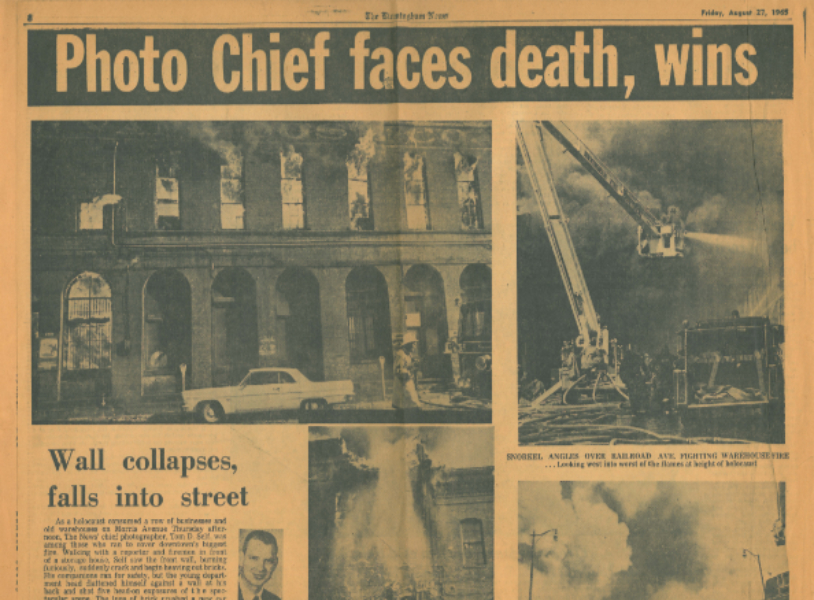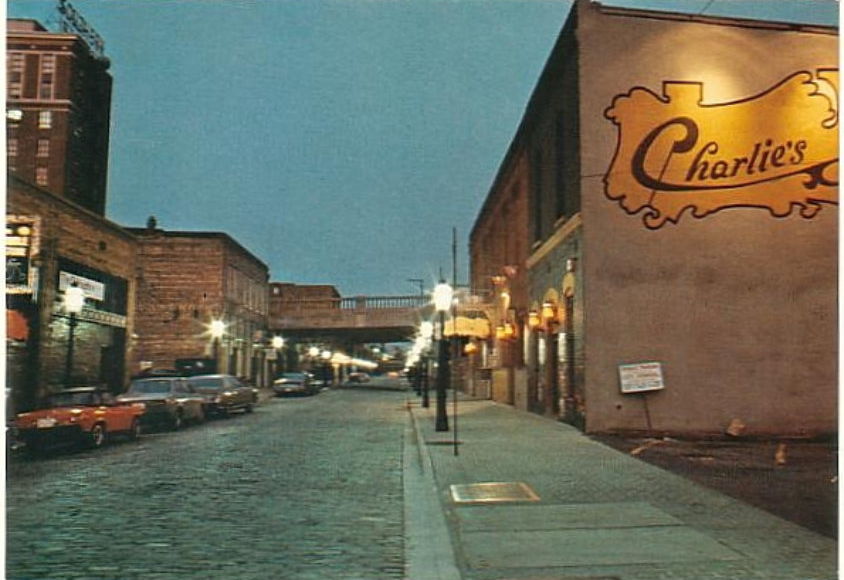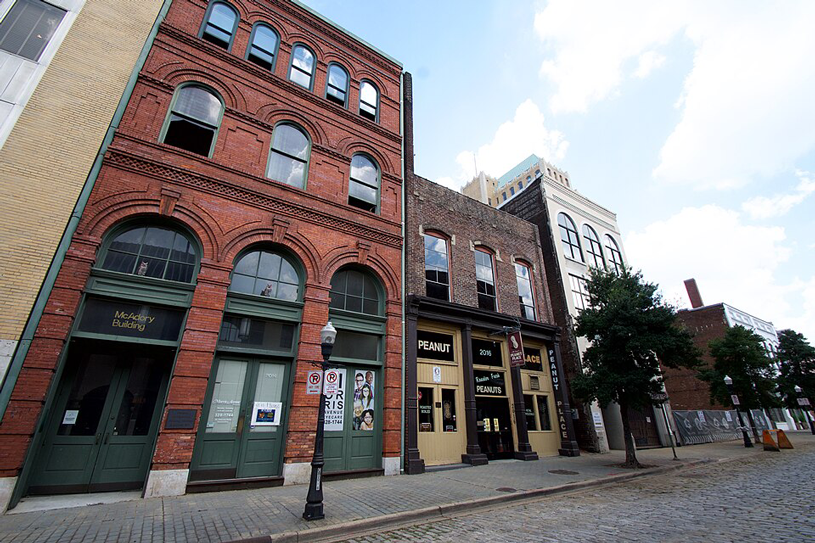Morris’ Story
Once the lifeline of Birmingham’s early trade, Morris Avenue bustled with grocers, suppliers, and rail activity. Though many warehouses fell silent as industry shifted, the street was reborn through historic preservation. Today, it remains one of the city’s most distinctive and lively destinations.
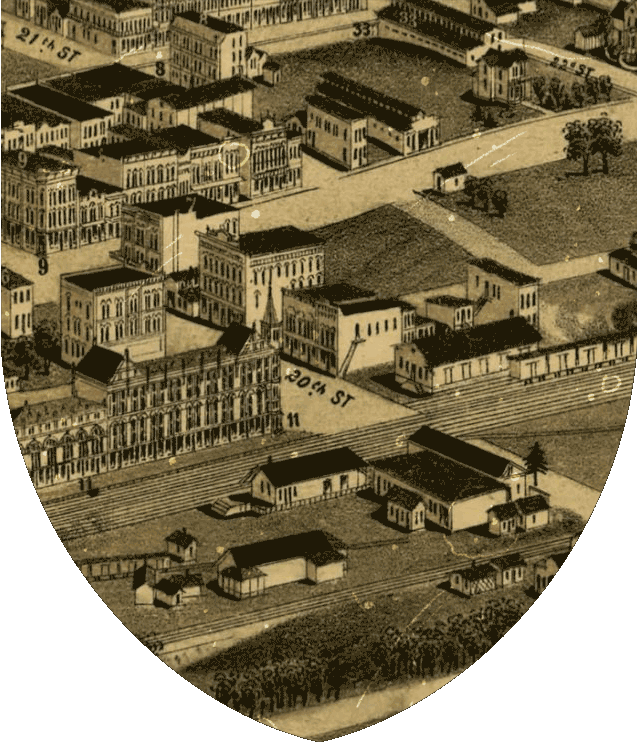
Morris Through Time
1870s-1890s
Birth of Birmingham’s Warehouse District
Shortly after Birmingham’s founding in 1871, Morris Avenue emerged as the city’s main warehouse corridor. Its cobblestone streets were built to handle heavy wagons. Rail lines ran just south of the avenue, making it a key location for trade in the rapidly growing “Magic City.” Its early architecture still anchors the street today (Library of Congress; Birmingham City Center Historic Resources Report).
Shortly after Birmingham’s founding in 1871, Morris Avenue emerged as the city’s main warehouse corridor. Its cobblestone streets were built to handle heavy wagons. Rail lines ran just south of the avenue, making it a key location for trade in the rapidly growing “Magic City.” Its early architecture still anchors the street today (Library of Congress; Birmingham City Center Historic Resources Report).
1900s-1920s
Wholesale Row Thrives
During this era, Morris Avenue earned the nickname “Wholesale Row” as it became home to grocers, produce dealers, and suppliers who kept Birmingham’s economy humming. Even after the devastating fire of 1905 destroyed several blocks, businesses quickly rebuilt, reinforcing the avenue’s importance. The street’s flourishing wholesale trade helped shape Birmingham as a regional commercial center (Causey; Library of Congress).
During this era, Morris Avenue earned the nickname “Wholesale Row” as it became home to grocers, produce dealers, and suppliers who kept Birmingham’s economy humming. Even after the devastating fire of 1905 destroyed several blocks, businesses quickly rebuilt, reinforcing the avenue’s importance. The street’s flourishing wholesale trade helped shape Birmingham as a regional commercial center (Causey; Library of Congress).
1930s-1950s
Shifts in Industry
As transportation shifted from trains to automobiles, Morris Avenue’s role as a shipping hub began to fade. Many warehouses struggled, though some adapted with new uses or stayed open to serve loyal customers. This period marked the beginning of a long transition for the district (Lee; Library of Congress; Birmingham City Center Historic Resources Report).
As transportation shifted from trains to automobiles, Morris Avenue’s role as a shipping hub began to fade. Many warehouses struggled, though some adapted with new uses or stayed open to serve loyal customers. This period marked the beginning of a long transition for the district (Lee; Library of Congress; Birmingham City Center Historic Resources Report).
1960s-1970s
Decline and Rediscovery
By the 1960s, vacancies and neglect left many of Morris Avenue’s buildings at risk of demolition. Preservationists rallied to save the cobblestones and historic structures, leading to its designation on the National Register of Historic Places in 1973. This recognition began a promising new chapter of the district’s story (Groover; Library of Congress).
By the 1960s, vacancies and neglect left many of Morris Avenue’s buildings at risk of demolition. Preservationists rallied to save the cobblestones and historic structures, leading to its designation on the National Register of Historic Places in 1973. This recognition began a promising new chapter of the district’s story (Groover; Library of Congress).
1980s-2000s
Revitalization Begins
Developers and entrepreneurs breathed new life into Morris Avenue by converting warehouses into lofts, restaurants, and creative spaces. The avenue became known for its mix of historic charm and modern use, attracting residents and businesses alike. These efforts set the stage for its ongoing transformation into a cultural and commercial destination (Birmingham City Center Historic Resources Report; Groover).
Developers and entrepreneurs breathed new life into Morris Avenue by converting warehouses into lofts, restaurants, and creative spaces. The avenue became known for its mix of historic charm and modern use, attracting residents and businesses alike. These efforts set the stage for its ongoing transformation into a cultural and commercial destination (Birmingham City Center Historic Resources Report; Groover).
2010s-Today
Renewal and Community
Morris Avenue now thrives as both a historic landmark and a lively gathering place. New businesses, community events, and redevelopment projects have made it a desirable location for both visitors and residents. Its cobblestone streets connect past and present, showcasing Birmingham’s ongoing renewal (Armstrong; Groover).
Morris Avenue now thrives as both a historic landmark and a lively gathering place. New businesses, community events, and redevelopment projects have made it a desirable location for both visitors and residents. Its cobblestone streets connect past and present, showcasing Birmingham’s ongoing renewal (Armstrong; Groover).
